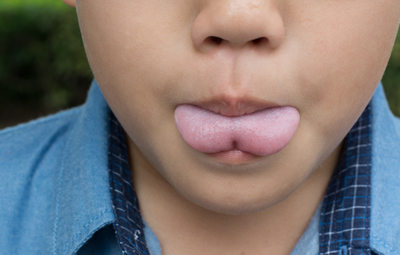Correcting mouth breathing is a top priority in my work with children with breathing, sleep, postural and behavioural issues.
The list of problems that mouth breathing contributes to is long. Children who mouth breath are much more prone to developing facial imbalances as well as orthodontic, muscular-skeletal and postural problems. They tend to have narrower and smaller jaws, longer faces, smaller airways, poor posture and muscle function. These make them more prone to sleep apnea and snoring as children, and also later in life. Mouth breathing is bad for airway health, leading to more colds, upper respiratory infections, ear infections and asthma. Success in the treatment of children with speech, feeding, sleep, attention, behaviour and learning issues can be completely dependent on the correction of mouth breathing.
In some cases, children can be trained to stop mouth breathing with breathing retraining and orofacial myofunctional exercises for the tongue, lips and nose. If these are practiced diligently breathing, posture, muscle function and general airway health improve enough to break the vicious cycles that maintain mouth breathing.
Sometimes however, resolution of mouth breathing is not easily achieved. In these cases the solution depends on identifying and treating causes. For example, it’s not uncommon to find that children with very large tonsils and adenoids are unable to stop mouth breathing until these shrink through treatment that improves the child’s gut and immune health or are removed surgically.
However, it’s important to realise that surgery that removes adenoids and tonsils is not the magic cure[1]. One also needs to optimise a child’s gut, immune and respiratory system function. Even when tonsils and adenoids are improved some children will continue to mouth breath so make sure you follow up with breathing retraining and other measures that improve respiratory health.
Some children with very narrow or compressed jaws need the help of a dentist to make more space for breathing. Dentists can help by giving the child fixed or removable appliances that stimulate the growth of the upper and lower jaws so that there is more space in the nasal and throat areas for breathing.
In some children mouth breathing begins because of tongue tie or ankyloglossia. In anklyoglossia the tongue sits low in the mouth and does not make adequate contact with the roof of the mouth during swallowing. This can contribute to a high narrow palate with reduced space for nasal breathing, and also to open mouth posture.
Tongue tie can be easily overlooked and the signs are not obvious unless you specifically look for them. Children with tongue tie may have a history of difficulty latching onto the breast, or the mother may have experienced pain during breast feeding. Some tongue tied children continue to have feeding issues or poor ability to form particular sounds. However feeding and speech difficulties in a mouth breathing child are by no means a definite indicator of tongue tie as these issues can have many causes.
The best way to identify tongue tie is through standardised assessment. Various assessments are used for different age groups. Babies are often assessed using the brief Bristol Tongue Assessment Tool (BTAT). There are also a number of more comprehensive assessments, such as the Hazelbaker and MBGR protocols that can be used in older children and adults. Comprehensive assessments look at and systematically grade the appearance of the tongue, the appearance and attachment of the lingual frenulum (tissues under the tongue that anchor it to the floor of the mouth) and also consider the function of the tongue.
One useful functional test that can be used alongside other evaluations is called the tongue range of motion ratio (TRMR)[2]. This test looks at the ratio between the measure of maximal mouth opening and mouth opening with the tongue on the roof of the mouth. A below average measure i.e less than 50% of mouth opening with tongue on the roof of the mouth is an important functional indicator of tongue tie. When looking at the tongue during a functional test the practitioner should also look at strain and tension in the floor of the mouth, the neck and jaw and also evaluate the strength of the tongue.
The important message for parents is if you child is mouth breathing don’t give up, you can find a solution and there are people out there who are trained to help you. There are many health professionals now who are becoming aware of the importance of stopping mouth breathing and a growing number are becoming aware that tongue tie should be assessed as a possible cause. Your dentist, osteopath, ENT, orofacial myologist or pediatrician doctor may be able to help you. However it’s important to look at the whole child and improve the health of the whole system.
So also seek the help of an integrative health practitioner who understands how to improve gut, immune and respiratory health.
If you want to contact me personally email me on contact@rosalbacourtney.com or call 02 9918 3460
References
- Byars, S.G., S.C. Stearns, and J.J. Boomsma, Association of Long-Term Risk of Respiratory, Allergic, and Infectious Diseases With Removal of Adenoids and Tonsils in Childhood. JAMA Otolaryngol Head Neck Surg, 2018.
- Yoon, A., et al., Toward a functional definition of ankyloglossia: validating current grading scales for lingual frenulum length and tongue mobility in 1052 subjects. Sleep and Breathing 2017. 21(3): p. 767-775.
Some Resources
Expert opinion discussion about tonsil removal
https://www.scimex.org/newsfeed/tonsil-and-adenoid-removal-associated-with-long-term-risks-of-respiratory,-allergic-and-infectious-diseases
Bristol Tongue Assessment Tool
http://baynav.bopdhb.govt.nz/media/2345/20170816-bristol-tongue-assessment-tool-btat.pdf
Hazelbaker Assessment for Tongue
https://www.med.unc.edu/pediatrics/education/current-residents/rotation-information/newborn-nursery/hazelbaker_frenum.pdf
MBGR Protocol article
https://www.researchgate.net/publication/235384002_MBGR_protocol_of_orofacial_myofunctional_evaluation_with_scores
Tongue Range of Motion Ratio article
https://www.ncbi.nlm.nih.gov/pubmed/28097623







